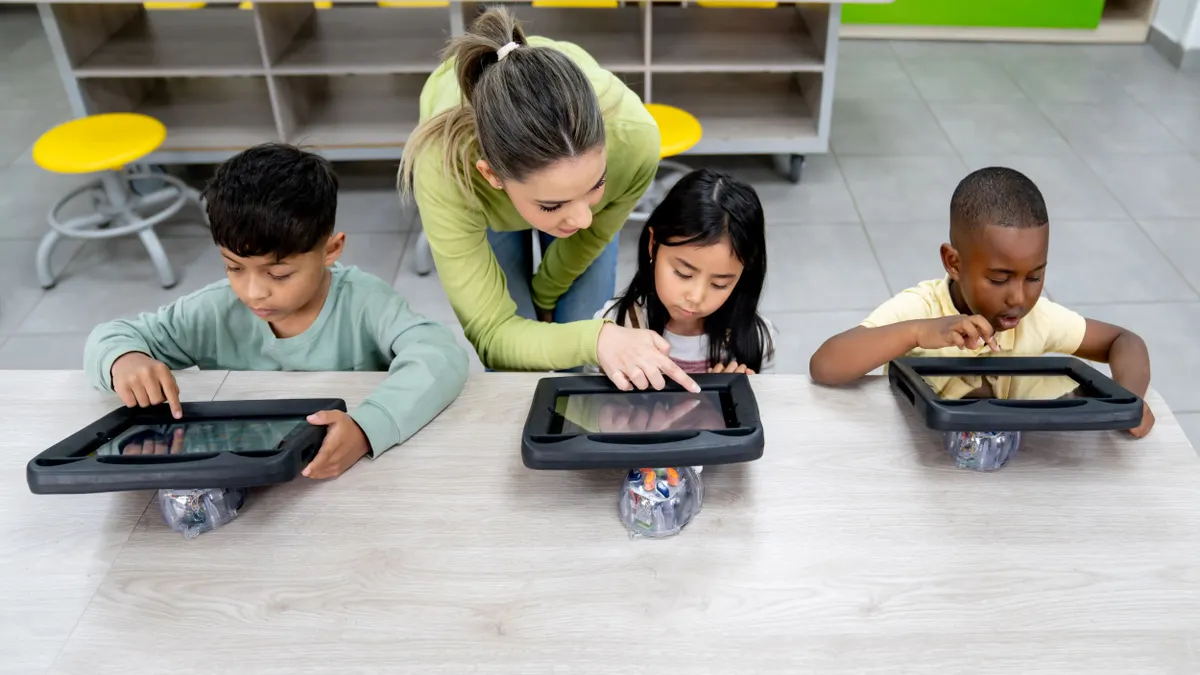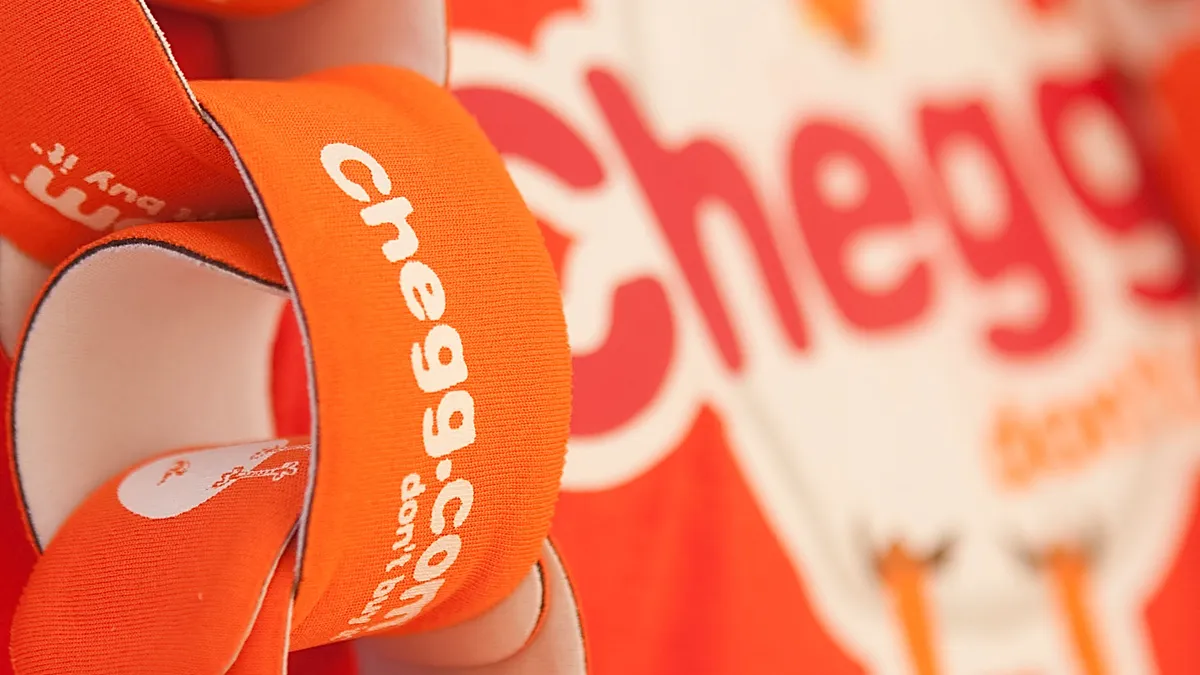If you know ClassDojo as the behavior management system with the quirky avatars and easy-to-manage student tracker, it's time to update your understanding of the company. That's right, ClassDojo is expanding its mission so that it's no longer just about behavior but true classroom communication between what it calls the "trusty-triangle" of parents, teachers, and students.
When co-founders Sam Chaudhary, a former high school teacher, and Liam Don, an engineer who left an education Ph.D., moved from London to San Francisco to launch what became ClassDojo, the initial idea was different from the behavioral management system they say is used by three million teachers and over 50 million students and parents in 150 countries. Essentially, says Chaudhary, the duo's aim was more "to do things to help work in groups and helping them help each other."
Amid the platform's latest evolution, we chatted with Chaudhary to learn about the surprisingly fluid transition to an all-around classroom community facilitator while touching on the company's early days, his response to criticism, and how and why he thinks classroom communication is so important and underrepresented in schools today.
EDUCATION DIVE: Where did the initial idea come from?
SAM CHAUDHARY: My first block of teaching experience was very early at my own middle and high school. Between the age 14 and 18, our school had this really odd system where if you were doing well academically, they insisted that you taught classes. So for about 15 hours a week, for four years, I ended up teaching in a classroom with a teacher there. And sometimes a teacher wasn’t there. It’s a really interesting school culture where they insisted on students helping other students.
Wow! How fascinating and beneficial for students.
CHAUDHARY: Yeah. It was a really beautiful thing, actually. Everyone really loved it. What happened, actually, was that they had this thing where, as a class, we don’t let anyone fall behind or race ahead. The class is all going to move forward. Those who are doing well will help others, and when you stop doing well, people will help you. It was really a beautiful thing, very collaborative. For me, that’s where I got my love for education. It was just this phenomenal way to help and be helped when you needed it. So it was a very supportive environment.
So what happened to that idea? How did ClassDojo come to be?
CHAUDHARY: When Liam and I got to California, we ended up speaking with 300 or 400 teachers in our first three weeks, and we really focused on solving real problems for them. The group work thing didn’t come up enough for it to be a real problem, so it was a really formative part of the process, understanding how we could help teachers, parents, and kids solve the most pernicious problems in the classroom. That’s really where ClassDojo started.
What were the issues that came up?
CHAUDHARY: It was really quite interesting. What we found is people would identify all types of things. Teachers would say, "Hey, I really hate marking homework," and we would say, "Why do you hate marking homework?" And we just kept asking "why?" and you’d get to these really interesting answers, which all converged to basically being stressed out, exhausted, and tired from a full day at school. It was like, "I hate marking homework because I am so exhausted from everything we did in the classroom and I’m exhausted because of classroom management stuff."
So what we kept coming back to was that, for new teachers in particular, classroom management was a really difficult problem, and a lot of teacher training time was spent on it. We found that it was actually one of the biggest reasons teachers leave teaching — because they can’t handle the stress or the fatigue of the classroom every day. What we also found was that all or most of the tools that teachers had been given were basically pretty rudimentary. It was all about detentions and punishments and disciplines, and, in some cases, rewards — like bribing kids for doing things. All these teachers were figuring out systems for themselves, and lots of them were pretty post-hoc and pretty punitive.
The worst thing of all was we found some work showing more than half the teachers in the country say that they spend about half their time in the classroom managing the classroom rather than actually being able to teach. For me, that represented just a huge waste of instructional and learning time where no teaching and learning is actually happening. It sound like a very painful problem that was causing people to leave teaching and causing them to hate being a teacher and so on. We thought that if we could just make a small dent in this, if we could just remove some of the negativity, that would be a really good thing.
Rather than waiting for students to screw up and then punish them, if we could give teachers a way to encourage kids and recognize them for the things they are doing well, that would be a really great thing.
What did you create first?
CHAUDHARY: The first tiny thing that we built, and we built it in less than a week, was a way for teachers to give kids positive feedback, and we found that teachers started using it a lot in the classroom. They started giving positive feedback points for leadership or for creativity or whatever else, and this started growing. Maybe a year later, we were looking through what users were saying, what teachers and kids were saying, and we found that our very best teachers were actually the ones who built very healthy and positive relationships with their kids, but also with their parents. We thought, well this is a very important finding for us. These things about building relationships — it’s not only with the kids, but with the families. There are very important things. So we added parent accounts and student accounts. Previously, it had just been teachers who could use Class Dojo. Then we added parents and students, and now we have this triangle of teachers and students and parents.
It sounds like the mission and goals of the company are shifting.
CHAUDHARY: Yes. We thought we were doing something about classroom management, but what we’re actually trying to do is build strong, positive relationships between teachers, parents, and students. We talked a bit about it in the app update a couple weeks ago, but the whole company recognizes that as the guiding principle. It goes beyond helping everyone communicate. They can communicate about anything — homework, whatever. This is much more about building these positive relationships and helping everyone deepen their understanding of each other and know each other better.
I think that’s why the app updates were such a big deal. We thought we were doing just this simple positive feedback and communication, but what we’re actually doing is trying to deepen these relationships. And we’ve got more features coming.
Ooh! Can you give us a hint of what’s to come?
CHAUDHARY: I can’t give you a sneak preview. Don’t do that to me! But we’d love to share them in time.
I think the app update is the perfect place to start. We started with just the web app. Over 70% of teachers, parents, and kids use ClassDojo on their phones now. Historically, we have the best phone app. It’s now the best part of the company and it reflects that philosophy of this trusty triangle of parents, teachers, and kids. I think it’s very explicit with the app now. It’s about encouraging kids, having positive conversations with them, and then also engaging parents and bringing families into the purpose, too.
ClassDojo has received criticism over the years along the lines that the current model promotes extrinsic rewards and can, in turn, kill intrinsic motivation. How do you respond to your critics?
CHAUDHARY: I think it’s a very important topic. Liam and I moved here to to do something good for education. The last thing in the world that we’d want is to kill any type of intrinsic motivation or make lives worse. I think the reality is that we know there are lots of classrooms where various classroom management things are already happening, and some of those are reward systems. Some are point economies or whatever you want. I’m sure you’ve seen some of them from teachers you know.
The reality is there are no rewards. We aren’t cashing points. No toys or treats. What we’re trying to operate on is the principal of positive feedback. It is a very powerful thing, and if we can focus on helping parents and teachers and kids focus on recognizing and encouraging the positive things, we think that’s a really good thing and comparable to the type of feedback you might get at work or the kinds of feedback you’ll get for the rest of your life.
Too often, the types of feedback that kids get at school are post-hoc and negative. It’s like "Hey, you got a C on this test." And it’s too late. The kid has taken the test, it counts as a grade and they can’t go back and change it. Parents get feedback once a semester at the parent teacher conferences, where they get this horrible negative shock and there is all this stress because the teacher has to write all these reports and so on. If we can help people have "just in time," meaningful, positive conversations every day, then that’s a wonderful thing. I think there is this mental model of a reward system, and that’s not what ClassDojo is. We’re very explicit that the relationships between the teachers, parents, and kids are what are important here, and starting conversations is what is important here. Any feedback that teachers are giving to parents and kids is just that. It’s positive feedback.
Would you like to see more education news like this in your inbox on a daily basis? Subscribe to our Education Dive email newsletter! You may also want to read Education Dive's look at 8 K-12 tech tools to watch in 2015.

















